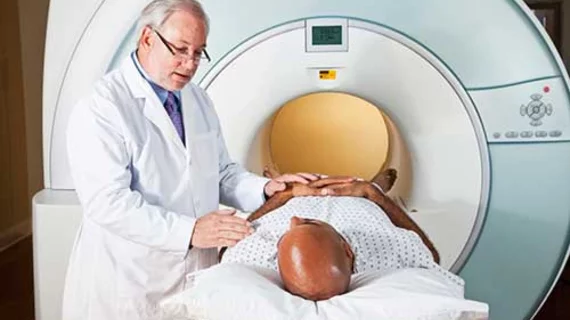Advanced MRI technique significantly improves radiologists’ ability to image the pancreas
Newly developed advanced diffusion-weighted imaging techniques can help radiologists better visualize the pancreas on MRI scans, according to new research published in Clinical Imaging.
Due to its small size, and gastric and respiratory motion, high-quality, artifact-free images of the pancreas can be difficult to achieve on MRI. Current solutions involve giving patients verbal breathing cues, but this time-consuming process doesn’t always work.
“A different approach to correcting images for motion artifacts is a retrospective motion-compensated (MoCo) image reconstruction approach, which does not increase acquisition time nor reduce field of view while improving image quality in MR imaging,” Anoshirwan Andrej Tavakoli, MD, with the German Cancer Research Center, and co-authors explained.
The team wanted to examine how diffusion-weighted imaging (DWI) with advanced post-processing techniques might affect image quality of the pancreas. To achieve this, they had two blinded radiologists retrospectively analyze 62 consecutive abdominal MRIs. The rads were asked to compare the quality of images performed using standard versus advanced post-processing techniques.
The radiologists preferred advanced post-processing in 96% of scans. Compared to the standard approach, the advanced technique earned higher marks for image quality and sharpness of boundaries. Using the advanced technique, radiologists were also easily able to differentiate the pancreas from surrounding anatomy.
“Achieving an improved image quality for pancreatic evaluation was the result of combining an approach of optimizing classic image parameters in combination with using an advanced post-processing,” the doctors wrote. "This study demonstrates the advantages of an advanced … sequence for the assessment of the pancreas in clinical patients without pancreatic pathology.”
The researchers also noted this advanced sequence could be applied in an oncology setting by detecting small tumors in their initial stages of development, though lesion assessment was not the primary focus of their work.
In that respect, the clinical impact is yet to be seen and will require further studies, the doctors concluded.
You can view the full study in Clinical Imaging.

